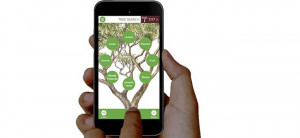
Just in time for Arbor Week celebrations, TheTreeApp is making its debut to help outdoor enthusiasts identify and learn about 1 114 trees, which include all indigenous trees and the larger well-known invasive species.
TheTreeApp aims to provide a deeper understanding of the diversity of woody species and the huge variations in the different parts of SA, says app founder and co-creator Val Thomas.
The tree identification app was developed by a team of South Africans, including Thomas, dedicated to conservation, wildlife and sustainable biodiversity.
She hopes the app will help people to start noticing and enjoying trees by name, whenever they are outdoors and wherever they go.
"Our experience is that trees are harder to learn than, say, birds or mammals. But they are really deeply loved by large numbers of people, with outdoor interest across the board, who could have a lot of pleasure if they knew more," she explains.
"Traditional botany is a serious and significant science, but it is not accessible to the average person. TheTreeApp has attempted to bridge this gap and provide a usable resource that allows users to discover the magnificence of our trees using relatively simple concepts and simple language. We do want TheTreeApp to be used by all South Africans, and we have gone to the enormous expense of including all the species names we could unearth, for all 11 languages in South Africa, as well as the botanical names."
The app functions much like Google, but for trees, allowing audiences the opportunity to easily investigate, search, identify and learn about trees based on their own descriptions and observations made using the digital tool.
The search function on the app works by a process of elimination. Users can choose from hundreds of categories that are sorted into a logical structure. The user can go into any of the categories and select the attributes of the tree, says Thomas.

"The main categories are leaves, thorns, flowers, fruit, woody features, growth form, latex and status. Under these main categories there are sub-categories, so the user will drill down through the structure until a selectable option is provided. The main categories filter the number of trees once you enter it, eg, when you select 'simple leaves', it will filter the number of trees to only display trees with simple leaves, but will then allow the user to select further filtering options under simple leaves."
In addition, the creators have added a GPS location search capability that works with a mapping function to select the specific trees in a user's location.
The app is available for devices that run on both iOS and Android at a cost of R400.
"This app involved a huge effort by many people and was very expensive to develop, as it is a specialist app. We created it for wildlife and conservation particularly in South Africa. It needs to be sold, partly to recoup some of the costs, but also as ongoing maintenance and new features are expensive. Funds are also needed to support other specialist apps we are working on," she states.
Although it doesn't work like Shazam for now, Thomas says the team is working on that and it will be available in a future version.
"Currently, it only supports physical selection by the user and not artificial intelligence like Shazam," she concludes.
Share